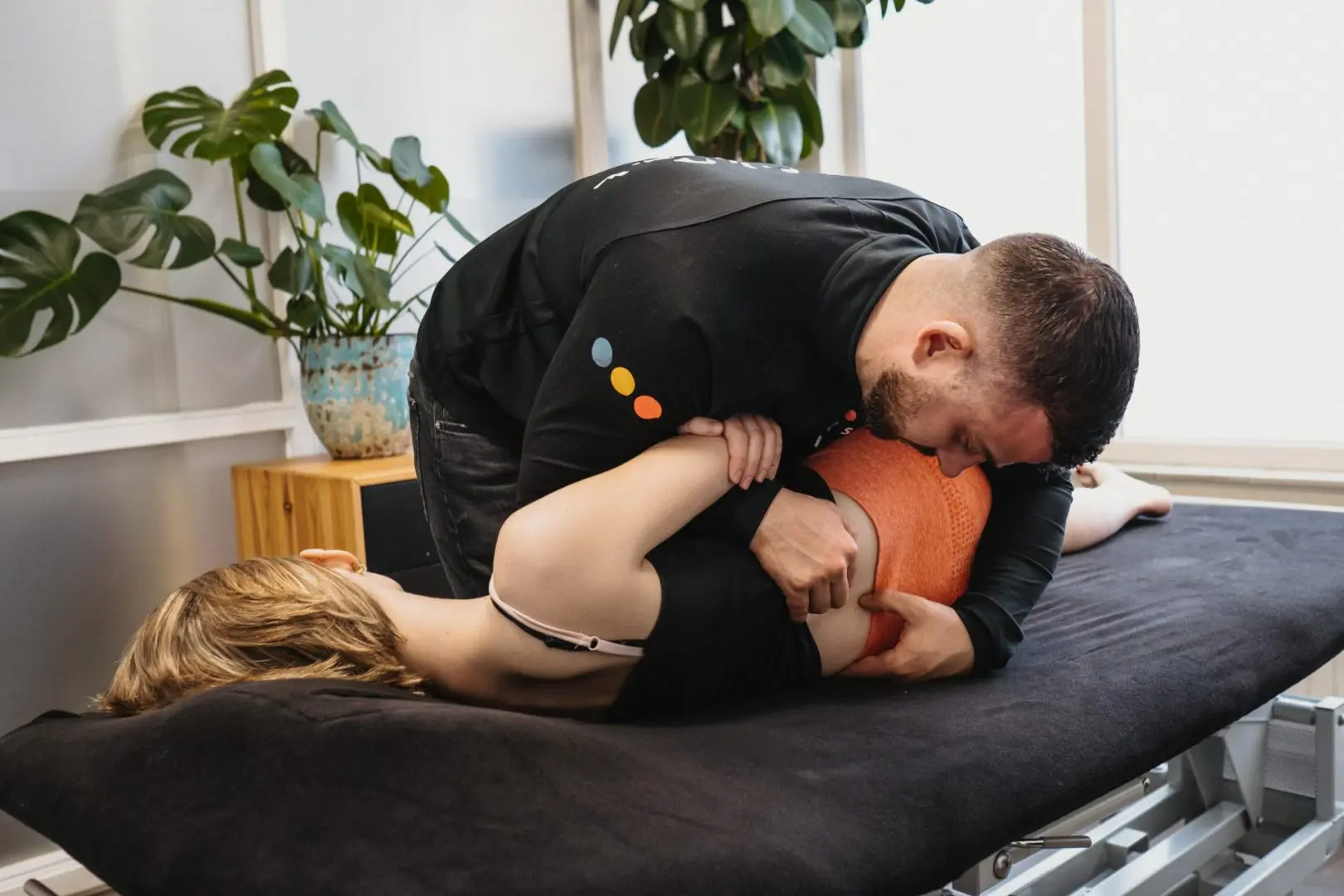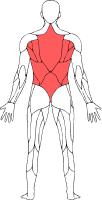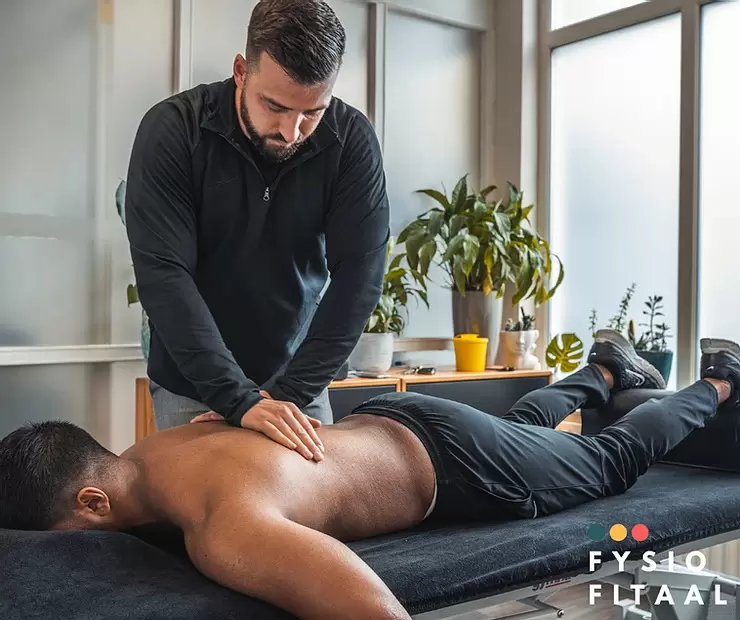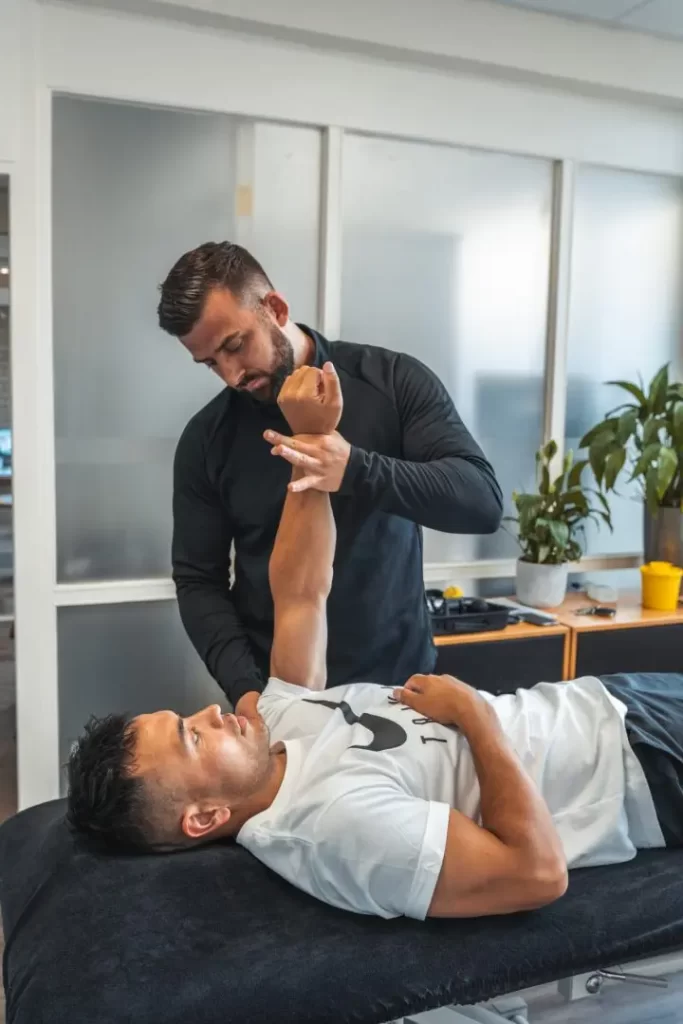Back pain
Back pain is becoming increasingly common. Back pain can occur acutely or gradually increase. The most common of these complaints is lower back pain.
Low back pain is located somewhere between the lower rib and the tailbone. In most cases, you can clearly describe and pinpoint the pain. Sometimes there is radiation this is usually in one leg and very occasionally in both legs. The leg pain can radiate sharply to the foot. Sometimes with tingling in the leg. Some postures and movements cause more symptoms and in some cases movement is almost impossible.

Cause
Back pain can have many different causes. In most cases, it is non-specific low back pain. This means that the cause cannot be directly demonstrated by means of, for example, an X-ray or MRI. Usually, the cause can then be found in the musculoskeletal system, i.e. in the muscles or joints. Examples include terms such as lumbago and lumbago. These are precisely the complaints where physiotherapy is of great benefit.
Sometimes a herniated disc in the low back is the cause of the symptoms. Often these complaints also go away with the help of physiotherapy. A herniated disc involves pressure on the nerve running from the low back to the leg. Generally, the symptoms in the leg are in the foreground. So you have more pain in your leg than pain in your low back. This often involves a sharp clear pain that passes through the leg.
Osteoarthritis complaints of the low back become more common as we age. In particular, we see that the intervertebral discs show signs of ageing. Osteoarthritis of the spinal canal is also possible. We call this a dan stenosis. Osteoarthritis is not always a reason for lower back pain. If the symptoms match the image on an X-ray, then the cause of the pain may well be osteoarthritis in the back.
Common Back pain


Hernia nuclei pulposi
Often, a herniated disc involves pressure on the nerve because the inner...

Risk factors title
Risk factors title

Diagnosis
A-specific low back pain particularly give pain in the lower back. Complaints often manifest while performing certain activities such as; driving a car, sitting for long periods and bending over. Sometimes, besides pain and restriction in activities, there is also stiffness and sometimes even some radiation to the buttocks or legs. We usually see a decrease in complaints within 3 weeks. Often, complaints go away quickly under the proper supervision of a physiotherapist.
Making the diagnosis a-specific low back pain is done on the basis of an interview combined with typical symptoms and physical examination. The physiotherapist Conducts a number of tests to check for the presence of a-spefic low back pain. The physiotherapists at Fysiofitaal will help you make the right diagnosis.
The different types
The different types
Anatomy of the low back
The low back consists of several muscles, nerves and joints. The lumbar spine consists of 5 vertebrae. These vertebrae are often abbreviated as L1 to L5. The low back has a natural curvature. The joints in the back are called facet joints. The facet joints in the low back mainly enable bending and stretching and, to a lesser extent, turning. Between all these vertebrae are intervertebral discs. Intervertebral discs are of a softer structure and their function is to allow the vertebrae to move smoothly among themselves. Besides movement, the intervertebral disc also plays an important role in the stability and shock absorption of the low back. There are many muscles in the low back. The function of these muscles is to move and stabilise the spine during various daily movements. There are muscles that run from vertebra to vertebra but also muscles that run all over the spine. Anatomically, a distinction is made between a local muscle system and a global muscle system. Nerves run from the various vertebrae into the leg from the lower back. Nerves have a controlling function towards the muscles in the leg. This is where stimuli from the brain go to the muscles. This makes movement possible. They also have a sensory function. This means that information such as pain, temperature, pressure and movement stimuli go from the leg to the brain.
Physiotherapy for back pain
During the examination, we look at what possible factors are contributing to your back pain. Based on the examination and interview, a clear treatment plan is drawn up. Keep moving is very important to maintain the mobility in your back. We think it is very important that you understand how the symptoms arise and what you can take into account to recover as quickly as possible! Besides specific advice, treatment can include increasing the mobility of the lower back through manual therapy, various muscle techniques and training the muscles of the back through exercise therapy and physical training.
Treatment
Treatment of a-specific low back pain can be done in different ways. For example, the first treatment will focus on reducing the pains through mobilisations, for example. Furthermore, the physiotherapist at Fysiofitaal provide a personalised exercise schedule to strengthen the back again. If you are suffering from lower back pain, it is always important to try to keep moving, this includes things like hiking.
Suffering from back pain that just won't go away? Make a appointment with one of our therapists and they will help you out!
Physical testing
Physical testing
Making an appointment at FysioFitaal
We work from multiple locations in Tilburg, always close by for professional and accessible physiotherapy. Fill in the contact form and we will contact you soon. Together, we will work on your recovery!

